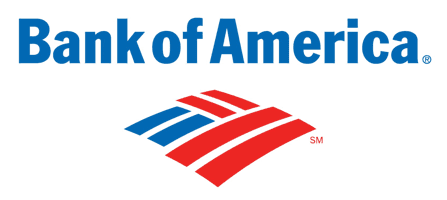The oil and gas industry has been one of the hardest hit sectors in 2020, as a near-complete COVID-19-driven halt in global industrial activity earlier this year brought oil prices to record lows. However, with China resuming its economic operations since the second quarter, and the rest of the world following by degrees, West Texas Intermediate (WTI) crude oil has gained 228.3% to date since hitting its all-time low of negative $37.63 per barrel on April 20.
The ongoing coronavirus vaccine deployment, combined with OPEC’s global supply agreement to reduce total oil output and a $900 billion U.S. fiscal stimulus package have driven an oil price rally this month. WTI has gained 6.5% in December.
However, the industry still faces headwinds as 2021 approaches. A second strain of coronavirus is making renewed lockdowns necessary in most European countries. And international travel restrictions are expected to again hamper global trade.
Also, most countries are focusing on revamping their industrial sectors to make them more energy efficient, which poses a long-term challenge for the oil and gas sector. Companies such as Schlumberger Limited (SLB) and Halliburton Company (HAL) are focusing on reviving their business to the pre-pandemic levels while dealing with long-term challenges in the guise of emission standards.
Both companies have generated significant returns over the past nine months. HAL has gained 195.6% over this period, while SLB returned 56.8%. In terms of performance over the past three-months, HAL is the clear winner with 48% gains versus SLB’s 31.1%. HAL has gained 7.6% over the past month, while SLB declined marginally over this period.
But which stock is a better buy now? Let us find out.
Latest Developments
On December 2, HAL partnered with Accenture to digitize its manufacturing function and supply chain. HAL plans to launch a new global hub and spoke supply chain and manufacturing services model, which should increase the company’s operational efficiency as well as increase its productivity. This will allow the company to achieve economies of scale, thereby increasing its profitability.
To compete with the alternative energy industry, HAL announced its plan to set science-based targets to reduce emissions in 2021. The company expects to receive validation from the Science Based Targets Initiative (SBTi) by 2022.
SLB’s captive insurance companies Castle Harbour Insurance Ltd. and Harrington Sound Insurance Ltd. received an “A” for Financial Strength and “A+” for Long term issuer credit ratings, from AM Best on November 12. This indicates strong risk-adjusted capitalization and excellent operating performance by SLB over the years, allowing its privately held insurance companies to receive excellent credit ratings.
SLB sold its North American Rod Lift business to Lufkin Industries on November 2. This allows SLB to channel all its resources and focus on its energy-business segment, while building a strategic relationship with well capitalized Lufkin Industries.
Recent Financial Results
HAL’s total operating income has risen significantly from the negative prior quarter values to $142 million in the third quarter ended September 30, 2020. Net income improved 98.9% sequentially, while EPS almost doubled from the prior quarter. The company reported a cash and cash equivalents balance of $2.12 billion for nine months ended September 30, up 34.6% year-over-year.
SAL’s non-GAAP pretax segment operating income has risen 45% sequentially to $575 million in the third quarter ended September 30, 2020. Non-GAAP adjusted EBITDA rose 21% from the prior quarter to $1.02 billion, while non-GAAP EPS (excluding taxes and credits) grew 220% sequentially to $0.16.
Past and Expected Financial Performance
HAL’s leveraged free cash flow has increased at a CAGR of 2.9% over the past three years, while SLB’s leveraged free cash flow rose at 2.6% over the same period.
However, SLB’s EPS rose at 6% year-over-year, while HAL’s EPS declined from the same period last year.
Analysts expect HAL’s EPS to rise 8.1% year-over-year to $0.67 next year. SLB’s EPS, in contrast, is expected to rise 32.8% from the year-ago value to $0.85 in fiscal 2021.
Profitability
SLB’s trailing 12-month revenue is 1.60 times HAL’s. SLB is also more profitable with a gross margin of 11.7% compared to HAL’s 7.8%.
Furthermore, SLB’s ROA and leveraged free cash flow of 2.5% and 14.6%, respectively, compare favorably with HAL’s 1% and 13.8%, respectively.
Valuation
In terms of trailing 12-month non-GAAP P/E, SLB is currently trading at 25.46x, 4.7% more expensive than HAL, which is currently trading at 24.32x. SLB is also more expensive in terms of trailing 12-month Price/Sales (1.14x versus 1.03x).
However, HAL’ forward non-GAAP PEG of 2.77x is 78.7% higher than SLB’s 1.55x. In terms of trailing 12-month Price/Cash flow, HAL’s 7.05x is slightly more expensive than SLB’s 6.98x.
POWR Ratings
HAL is rated “Buy” in our proprietary POWR Ratings system, while SLB is rated “Sell”. Here’s how the four components of overall POWR Rating are graded for both these stocks:
HAL has a “B” for Trade Grade and Peer Grade, “C” for Buy & Hold Grade, and “D” for Industry Rank. In the 60-stock Energy – Services industry, it is currently ranked #3.
SLB, in comparison , has a “D” for Trade Grade, Peer Grade and Industry Rank, and “F” for Buy & Hold Grade. It is ranked #23 in the same industry.
The Winner
The steady recovery of the energy industry is reflected in SLB and HAL’s last reported financial results and consensus estimates. While neither of the companies are expected to reach their pre-pandemic levels soon, both SLB and HAL are trading above their 50-day and 200-day moving averages, indicating an uptrend in the stocks.
However, SLB is trading below its 20-day exponential moving average of $21.81, which reflects a slower recovery compared to HAL, which is trading above its 20-day EMA of $18.77. Thus, in addition to the fundamentals discussed here, HAL is expected to recover from the pandemic driven lows at a faster pace than SLB, as per technical indicators, making it a better buy here.
Want More Great Investing Ideas?
9 “MUST OWN” Growth Stocks for 2021
5 WINNING Stocks Chart Patterns
7 Best ETFs for the NEXT Bull Market
SLB shares were trading at $21.28 per share on Tuesday afternoon, down $0.29 (-1.34%). Year-to-date, SLB has declined -45.23%, versus a 17.45% rise in the benchmark S&P 500 index during the same period.
About the Author: Aditi Ganguly

Aditi is an experienced content developer and financial writer who is passionate about helping investors understand the do’s and don'ts of investing. She has a keen interest in the stock market and has a fundamental approach when analyzing equities. More...
More Resources for the Stocks in this Article
| Ticker | POWR Rating | Industry Rank | Rank in Industry |
| SLB | Get Rating | Get Rating | Get Rating |
| HAL | Get Rating | Get Rating | Get Rating |





